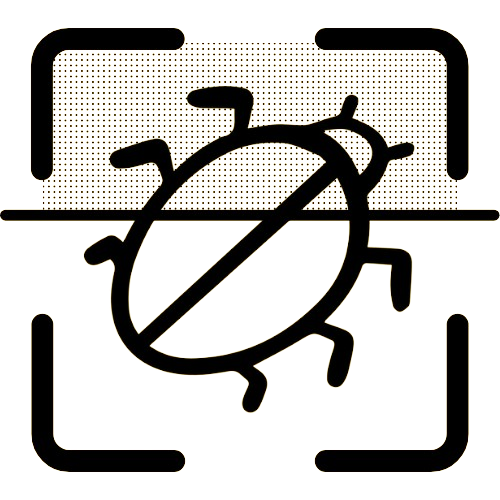Effective Bed Bug Monitoring: Techniques and Tools for Early Detection
June 06, 2025
Bed bugs are notorious for their stealth and resilience, making early detection crucial in preventing full-blown infestations. While their size and nocturnal habits allow them to remain undetected for long periods, employing effective bed bug detection techniques can help you catch them before they spread. Utilizing the right tools can also make a significant difference in monitoring your environment for these unwelcome guests.
Understanding Bed Bug Detection
Effective bed bug detection is a multifaceted approach that involves identifying the presence of these pests through visual inspections, utilizing technological aids, and being aware of behavioral signs indicative of bed bugs. Being familiar with potential infestation signs can reinforce these efforts, allowing for swift intervention.
Visual Inspection: The Traditional Method
The most straightforward method of bed bug detection is a visual inspection of commonly infested areas. This includes checking mattresses, bed frames, headboards, and any upholstered furniture. Look for live bed bugs, eggs, and cast skins. Typically, bed bugs are reddish-brown and about the size of an apple seed, but they can also appear cream-colored when newly hatched.
Expert Tip: Use a flashlight and magnifying glass during the inspection, especially in low-light conditions, to enhance visibility. Taking this extra step can help you spot even the smallest evidence of an infestation.
Modern Technological Aids: Introducing the Bed Bug Scanner
Advancements in technology have introduced innovative solutions for early bed bug monitoring. Digital tools like the Bed Bug Scanner utilize AI to analyze images of potentially infested areas. This tool is an invaluable asset for quick and precise identification, especially in spaces where traditional inspections may fall short.
By uploading an image to the Bedbug Scanner, you can get fast results on whether your space shows signs of a bed bug presence. This blend of technology and traditional methods ensures comprehensive monitoring of your living environment.
Early Bed Bug Monitoring: The Key to Prevention
Detecting bed bugs early can save you significant time and resources typically spent on full-scale exterminations. Continuous monitoring allows for prompt measures to be taken, preventing the spread of these pests across additional rooms and living spaces.
Behavioral Signs of Bed Bug Infestations
Knowing what signs to look for beyond just physical evidence can help in early detection. Some of these indicators include:
- Bite Marks: Waking up with new, red welts in a cluster or line on your body.
- Unusual Odors: A musty, sweet smell emitting from areas like the mattress and bedding.
- Dark Spots and Stains: Tiny brown or black spots on sheets or mattresses, which are fecal marks from the bugs.
Each of these signs signals a need for further investigation using both visual and technological methods. For further insights on leveraging early monitoring, see our detailed guide on early detection strategies.
Collaborative Efforts: Professional Help and Community Awareness
When dealing with bed bugs, sometimes it’s essential to bring in professionals. Pest control experts can perform thorough inspections and deploy specific treatments that might be beyond DIY capabilities. Meanwhile, raising community awareness is vital in managing shared spaces like apartment buildings or hotels where infestations can spread quickly.
Tools for Enhanced Monitoring
To effectively combat bed bug infestations, incorporating diverse tools into your monitoring strategy is advisable:
- Interceptors: These are placed under bed posts and trap bed bugs as they attempt to move to and from the bed.
- Encasements: Mattress and box spring encasements can prevent bed bugs from colonizing your bed, a common infestation site.
- Active Monitors: These devices use attractants like CO2, heat, or pheromones to draw in and trap bed bugs for easier detection.
Combining these physical tools with digital solutions like the Bed Bug Scanner creates a robust monitoring system capable of preventing severe infestations.
Success Stories: Real-Life Applications
Numerous individuals and businesses have successfully sidestepped severe infestations using proactive bed bug detection methods. For example, a mid-sized hotel implemented a combination of regular visual inspections and the Bed Bug Scanner, leading to a significant reduction in bed bug complaints from guests. Early detection allowed them to handle minor infestations swiftly, ensuring customer satisfaction and business reputation.
Similarly, a family troubled by ongoing bites used a combination of interceptors and the Bed Bug Scanner to promptly identify and address a small infestation before it worsened, highlighting the importance of using both traditional and technological methods for effective monitoring.
Conclusion: Stay Proactive Against Bed Bugs
Bed bugs pose a persistent threat, but with effective monitoring techniques and tools, you can stay ahead of potential infestations. Combining visual inspections, professional services, and innovative solutions like the Bed Bug Scanner can provide a comprehensive defense strategy. Proactive monitoring ensures that you can quickly identify and address issues, reducing the likelihood of a full-blown infestation.
Protect your home and peace of mind by making use of the Bedbug-Scanner.com tool today. Empower yourself with the knowledge and technology needed to maintain a bed bug-free environment. Whether you’re safeguarding your home or business, staying informed is your first line of defense.
